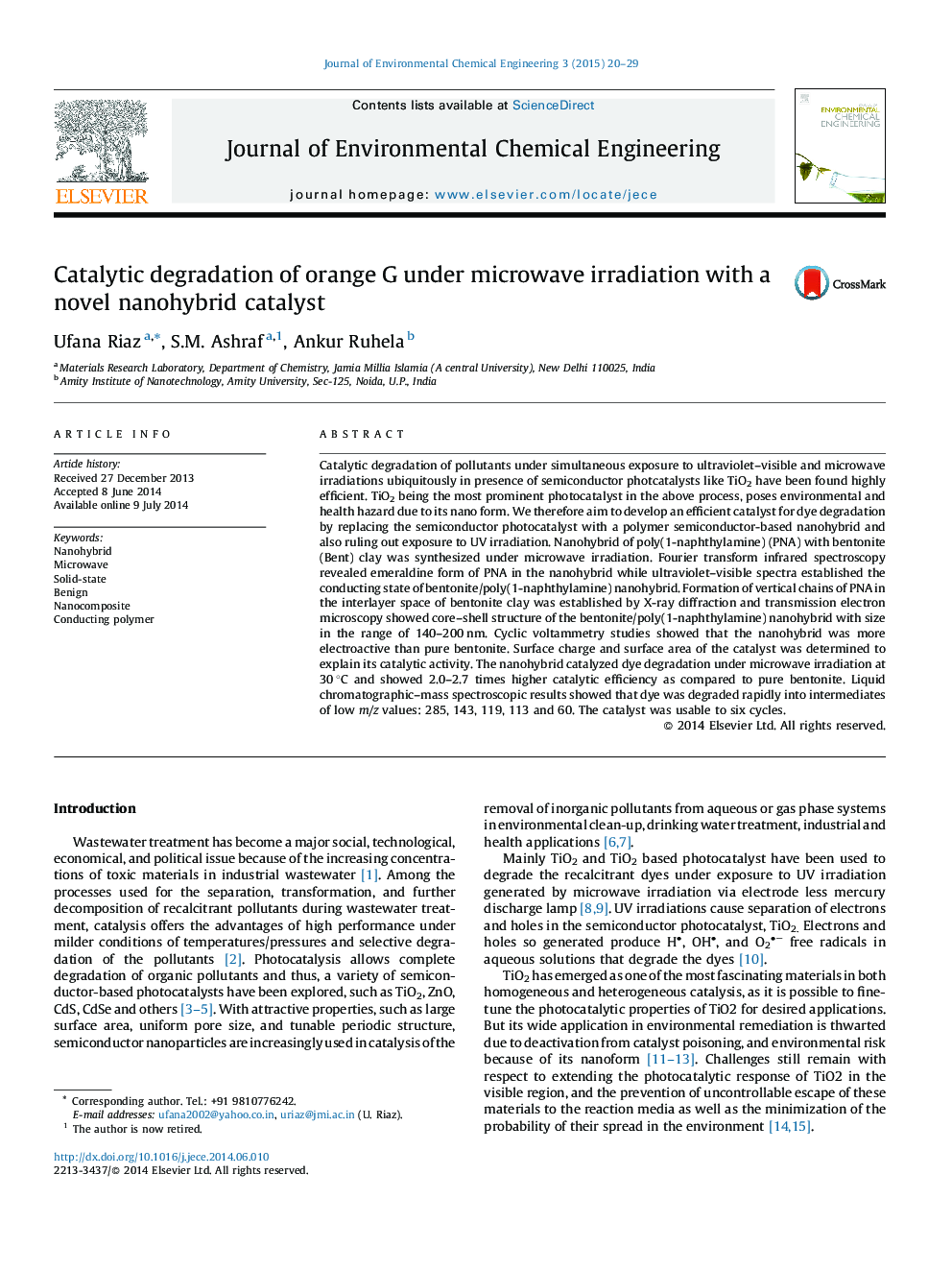| کد مقاله | کد نشریه | سال انتشار | مقاله انگلیسی | نسخه تمام متن |
|---|---|---|---|---|
| 222379 | 464275 | 2015 | 10 صفحه PDF | دانلود رایگان |

• Microwave-assisted synthesis of nanohybrid.
• Electroactivity of nanohybrid higher than pure bentonite.
• Catalytic dye degradation under microwave irradiation.
• Enhanced catalytic properties.
Catalytic degradation of pollutants under simultaneous exposure to ultraviolet–visible and microwave irradiations ubiquitously in presence of semiconductor photcatalysts like TiO2 have been found highly efficient. TiO2 being the most prominent photocatalyst in the above process, poses environmental and health hazard due to its nano form. We therefore aim to develop an efficient catalyst for dye degradation by replacing the semiconductor photocatalyst with a polymer semiconductor-based nanohybrid and also ruling out exposure to UV irradiation. Nanohybrid of poly(1-naphthylamine) (PNA) with bentonite (Bent) clay was synthesized under microwave irradiation. Fourier transform infrared spectroscopy revealed emeraldine form of PNA in the nanohybrid while ultraviolet–visible spectra established the conducting state of bentonite/poly(1-naphthylamine) nanohybrid. Formation of vertical chains of PNA in the interlayer space of bentonite clay was established by X-ray diffraction and transmission electron microscopy showed core–shell structure of the bentonite/poly(1-naphthylamine) nanohybrid with size in the range of 140–200 nm. Cyclic voltammetry studies showed that the nanohybrid was more electroactive than pure bentonite. Surface charge and surface area of the catalyst was determined to explain its catalytic activity. The nanohybrid catalyzed dye degradation under microwave irradiation at 30 °C and showed 2.0–2.7 times higher catalytic efficiency as compared to pure bentonite. Liquid chromatographic–mass spectroscopic results showed that dye was degraded rapidly into intermediates of low m/z values: 285, 143, 119, 113 and 60. The catalyst was usable to six cycles.
Journal: Journal of Environmental Chemical Engineering - Volume 3, Issue 1, March 2015, Pages 20–29